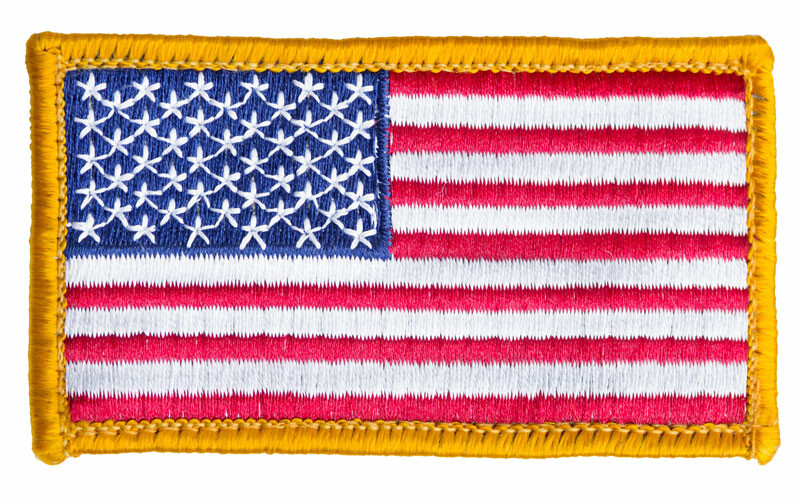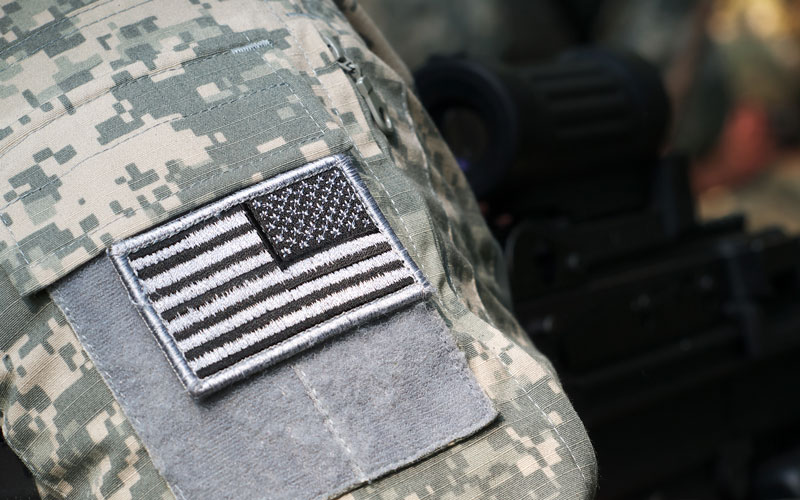
Flag Patches: What You Need to Know
Flag Patches are an essential part of military uniforms and civilian life as well. Here's the essential info.
In the interval between Flag Day in June and Independence Day in July, it’s natural to contemplate the American flag, and the many ways the flag is displayed and worn. Of course, we’re interested specifically in flag patches. They’re a popular topic for civilian and military personnel alike.
The history of flag patches is a fascinating one. Let’s take a look at how flag patches came to be, the colors they’re worn in, and that ever-popular “backward” American flag.
Flag Patch Basics
There’s nothing complicated about a flag patch. It’s simply a piece of fabric that features the national flag of a country. Many countries include such patches as part of their standard military uniforms.
They’re not just for military use, though. Police and fire departments, postal service workers, astronauts and even sports teams wear them as well, as part of their uniform. Olympic athletes wear flag patches indicating the country they compete for.
Some choose to add flag patches to their own jackets or hats to demonstrate their patriotism and faith in their country. Others apply them to backpacks to demonstrate their nation of origin when they travel.
Flag Patch Types
While embroidered flag patches are common, they’re certainly not the only option. Complex flag images might require woven or PVC patches instead. Woven patches allow more intricate patterns for a given patch size. PVC patches allow a greater range of artwork, recreating designs that might not be possible on embroidered patches.
Embroidered patches are the most common patch type. The flag design is embroidered onto a twill backing. These are typically a 100% embroidered style, with thread covering the entire backing.
Because they can use a thinner thread, woven patches allow a smaller design without losing image clarity or text legibility. They do tend to be less durable that woven patches, which can be an issue in some applications.
PVC patches don’t use thread, so they allow for the greatest possible flexibility in design and color choices. They tend to be a bit more expensive than embroidered or woven patches.
Flag Patch Colors
National flag patches are typically crafted in the colors used in the flag, such as the United States’ red, white and blue. However, there are variations.
U.S. military members normally wear the standard color flag. However, when deployed in the field, they wear subdued flags that blend in with camouflage uniform colors. That’s because the bold colors of the regular flag stand out, making the wearer easier for hostile forces to spot and target.
Different versions of the subdued flags exist, with colors appropriate to the specific deployments, whether urban, desert or woodland areas. Alternative colors to the red, white, and blue include various combinations of black, light gray, dark gray, tan and brown. All are designed to reduce visibility to protect the soldier wearing them.
When Flag Patches Became Mandatory
While it might seem that flag patches have always been part of U.S. military uniforms, that’s not really the case. Surprisingly, flag patches became a mandatory part of United States uniforms only in 2005.
As noted in Army regulations, “All soldiers will wear the full-color U.S. flag embroidered insignia on utility and organizational uniforms, unless deployed or in a field environment. Soldiers will wear the subdued tactical flag insignia while deployed or in a field environment.”
About that “Backward” Flag

Many people often ask why a service member’s flag patch on their right shoulder appears “backward,” i.e., with the field of stars on the right.
The answer is, it’s not really backward. It’s just a matter of how one looks at it.
When worn on the left shoulder, the flag faces forward, with the blue field of white stars (also known as the union) at the top left corner. That’s a custom dating back to the Civil War.
It’s the way a flag would be carried into battle, with the stars up front and the stripes streaming behind. Troops marched into battle with the flag flying to the rear, emphasizing the determination and courage of the combatants. The position is known as “assaulting forward.”
On the right shoulder, if the flag were to be positioned the same way as it is on the left, it would appear to be in retreat. For that reason, the flag is always portrayed as it would be when marching into battle with it – with the union forward at all times.
The Army makes this position clear, noting in Army Regulation 670-1, that “the correct and only way to wear the U.S. flag patch on a uniform is with the stars facing forward.”
So, the next time you see what appears to be a “backward” flag on a military uniform, just remember it’s all about marching forward into battle, with Old Glory streaming in the breeze.
Civilian Flag Patches
Military service members aren’t the only ones who wear flag patches. Many police departments, fire departments and emergency medical services also include flag patches as part of their uniforms. While there are variations, in general, they do follow the military tradition of keeping the field of stars facing forward, regardless of which shoulder the patches are worn on.
Businesses, schools and corporations may also choose to use flag patches as part of their standard uniform.
Attaching Flag Patches
Flag patches can be attached to garments in any of the typical ways, including sew-on, iron-on, tape and hook and loop fasteners. The latter offers the greatest flexibility, however.
The greatest advantage of hook and loop (Velcro®) fasteners is that they allow for the rapid attachment or removal of patches. They make it easy and quick to transfer flag patches from one uniform to another. It’s also possible to switch from a standard color flag patch to a subdued patch in seconds.
For businesses or individuals who want to wear flag patches, a more permanent attachment method might be preferable. A business uniform sleeve patch, for example, can be simply sewn on or ironed on if you don’t need to worry about transferring it between garments. The sew-on attachment is the most permanent style.
Flag patches are an outstanding way to denote national pride, military service and dedication to the principles of the nation. If you’re shopping for custom flag patches, we make it easy to order. Call or email us to find out more about how easy ordering custom flag patches can be.
